- Home
- Dale Mayer
Career Essentials_The Interview Page 3
Career Essentials_The Interview Read online
Page 3
ACADEMIC ACHIEVEMENTS
• Name of awards, scholarships
PROFESSIONAL DEVELOPMENT
• List in order
MEMBERSHIPS/ASSOCIATIONS
• Association name give location, Start and end date
• Membership Title
VOLUNTEER EXPERIENCE
• Name of the organization, State, Start and end date
• Job Title or Area Worked, (Month/Year)
INTERESTS
Functional résumé
Kathryn Jones
No Résumé Drive,
San Francisco, CA 98999
555-555-1234
[email protected]
Professional Summary
Over 12 years professional marketing management in the technology industry. Solid performance record with proven ability to lead teams through multiple projects, to identify and resolve conflicts while bringing projects in on time and on budget.
Significant Accomplishments
As Marketing Manager, Cobalt Canada, implemented new business model and achieved role of market leader.
• Represented Cobalt to partners in Europe and North America to support sales and marketing endeavors.
• Represented company and products at trade shows throughout Europe to buyers and potential clients.
• Led publicity program and coordinated all marketing materials.
• Developed strategic business relationships leading to growing client base with a 20% increase in sales.
As Marketing Manager at Kento Technology, positioned new technology products industry leader.
• Participated in product development
• Developed branding for new products
• Attended trade shows to develop business relationships with new clients
• Managed public relations
Professional History
Senior Marketing Manager – Cobalt Canada, California Division, San Diego, CA (2003-2010)
Marketing Manager – Kento Technology, San Diego, CA (1995-1994)
Education
MBA, Washington State University, Pullman, WA, (1991-94)
Combination / hybrid format
This type of a résumé is taking the good parts of a functional résumé and adding in a simple work history in reverse chronological order to address the question of where and when accomplishments happened – which is what so many of the recruiters and employers are looking for in a résumé.
So it’s a combination of the Functional and Chronological formats.
This flexibility has made this format very popular. It highlights outstanding skills and achievements you want the recruiter to know while presenting, yet not emphasizing, your job history.
This is the right format if:
• You have a diverse history of jobs that won’t show clear career growth
• When you have related experience but not an exact match
• If you have large employment gaps
• You have unique skills, education, or achievements that need to be accented
Here is an example of the skills and employment history sections to show difference:
Example:
Marketing and Sales
• Sold light fixtures and display products
• Researched and targeted new market leads
• Increased client base
• Organized and worked local trade shows
Advertising and Promotion
• Designed new promotions that increased sales by 15%
• Researched new locations for advertising opportunities
• Designed and coordinated new research material
Employment History
Sales Manager – Tyson Fixtures, New York, NY
Sales Associate – Lampworld, New York NY
* * *
The building blocks for this type of résumé include:
1. Contact information
2. Career goal – this is optional but helpful if you have one
3. Professional profile (also called Career Summary, Summary of Qualifications, Key Skills, etc) – consider this a summary of your accomplishments. This section is critical. List accomplishments according to the jobs you’ve held. Be sure to show any innovative changes you implemented that showed an improvement for the company – even if you did this as part of a team. If you increased sales by 22% over the previous year’s sales, then state it here. Always use figures to give your statements more impact.
4. Education – can come next or it can go after the work section. List all of your education from highest degree first.
5. Work history – which is also called Employment or Experience. If you are a student, use the latter because it’s broader and covers more than paid work. If you are short on work experience, paid or unpaid, that relates to this career, then make the heading something like Transferable Skills. Be sure to list your experiences with the most recent one first and use a list instead paragraph form.
6. Affiliations – list any professional memberships that pertain to the job and won’t cause controversy. Don’t put down anything that might offend the recruiter.
7. Interests – list any outside hobbies or activities and interests you enjoy.
The advantages of combining two résumé styles include the following:
• It allows you to address the weakness of the functional résumé.
• It allows you to highlight the best that you have to bring.
The disadvantages of this format include:
• It’s still not a format that recruiters are used to and they may not like it.
• Potential duplicate information from the work section to the accomplishments.
Remember some of these building blocks can be excluded entirely, such as the Career Goal. Also, some of the sections can be switched. The education section may come before or after the work history. You give relevance to what goes on the page. What goes on the top is given the most relevance. Each section moving down the page gets a little less.
If your education is more relevant to the job you are applying for than your job history, then place it above. If it isn’t, then put your education below the job history.
Sample combination format
Name
Address
City, State, Zip
Phone Number / Cell Number
Email
Objective – keep to one or two sentences.
Relevant Skills
• Name specific skills.
• List three to four points to warrant a separate section.
Experience
• List the accomplishments you attained in your work experience.
• List several points.
Employment
• List title, company, location, and the years you worked there.
• List second company, location, and the years you worked there.
Education
• List degrees, institution where you received it, location, and year you graduated.
• List other training; include Company or Institution, location and year.
Completed combination résumé
John Jones
No Résumé Way,
Kent, WA 98022
(333) 333-1234
Objective: To obtain an IT technical support position
Relevant skills:
• Operating systems: Apple, Windows, UNIX, LINUX
Experience:
• 10 years in computer systems, hardware, and software
• Trained employees on new computer software
• Managed equipment and software purchases
• Developed and implemented computer database
Employment
• Computer Seminar Instructor – Computer Answers Ltd, Portland, OR (2008 – Present)
• IT Manager – Services Inc., Portland, OR (’02 – ’08)
• IT Technical Specialist, Crashpatterns, Portland, OR (1997-2000)
E
ducation
• Apple service seminars
• Microsoft training seminars
• Bachelor of Science, Computer Science, University of British Columbia (1997)
Awards Received Employee of the Month twice while at Crashpatterns.
Other résumé formats
If you look around, you’ll see there are many other formats that you could consider. Some are the same but known by different names. There are others you’re better off ignoring entirely as they are not ones traditional recruiters like to see. In this section we’ll take a look at a few of the variations.
Targeted
A targeted résumé is one written to address a specific job or employer. More than any other type of résumé, you need to address each element of the job requirement through your résumé. Ideally you want to have a targeted résumé for each and every job. Understandably, this is not always feasible. Regardless of the format you choose, your résumé should be a targeted résumé.
In this résumé you highlight the experiences that are specific to the job for which you are applying. This is more time consuming but for the perfect job, it’s what you need.
This type of format should be used if:
• You have the title of the position and know the qualifications required for the job.
• You are answering a specific job ad.
• You are writing to apply to a specific company.
• You are writing several résumés to match specific career goals.
Don’t be confused. This is essentially the same résumé we’ve been talking about in the previous formats. Specifically you need to include the Summary of Qualifications section and it needs to show how your skills address the job’s requirements. In the chronological, functional, and hybrid formats, the Career Summary or Professional Summary was optional. However, in a targeted résumé that section is mandatory. All the other headings are the same in a targeted résumé as they are in the other formats.
This type of résumé MUST target the job you are applying for, as should everything else in the résumé. Focus the résumé at the job and don’t let other extra information slip in. It must present you as the answer to the company’s problems and the best candidate for that position.
As this type of résumé is exactly the same format as the basic three, there is no example. Refer to those should you need to.
Creative
A creative résumé is just the way it sounds – a regular résumé, with all the correct information but with some creative element. The creative element can be a fancy background, a graphic image behind the text or even a wild color. Use this type of résumé only if your creative skills are a particular requirement for the position.
This format is not electronic friendly and is not scannable, so it can’t be entered into the company’s database. If asked for a scannable résumé, don’t send a creative one. Consider creating two and send both.
Don’t let your creativity overwhelm the text. You need to make it easy to read. With this type of job, a portfolio is necessary. Keep your résumé professionally stylish and your creativity in your portfolio.
Graphics and photos may be included if those will showcase your skills. Background designs and watermarks behind the text often look good. For the actual text itself, the format arrangement will be one of the three standard résumé formats discussed. However, in this case, only the packaging is different.
The advantage of this type of résumé is that it allows a professional to display his or her inventiveness in a profession where imagination excels.
The disadvantages include:
• It can be hard to pull off properly.
• A straight business looking résumé is often the better choice.
• The array of creative résumés is huge, but the proper place to use them is extremely small.
And more
There are other ways to format your résumé. However, they are usually different in the layout rather than in the material presented. There is a linear layout, where everything runs straight along the left hand side. There is a newsletter layout, which means the material is laid out in two or three columns.
Regardless of layout, the most important thing to remember is that the information presented must be easy to read and accessible on a quick glance. There must be order and logic to the layout.
Don’t feel limited by layout. Find one that fits your needs or create your own. Just remember to put down the required information in a way that what you have to offer jumps off the page.
Résumé vs CV
Many people confuse these two marketing tools. They are similar and yet different. They both are used for the same purpose – to find a job. It’s how they are used that determines the differences.
The résumé is usually shorter at 1 to 2 pages and provides a brief overview of skills, education, and experience. A CV starts at 2 pages and can go as high as 5 pages with a detailed list of the same things. They are both written in a structured style and both are accompanied by a cover letter that summarizes the highlights, matching skills to the job.
In the United States, the résumé is more common. A CV is often requested for jobs in the academic world and for grant applications. A CV is more common throughout all other countries in the world.
The résumé contains the following elements:
• Concise summary of skills and achievements
• Key information for the job being applied for
• Written in three main styles – chronological, functional, or combination
A CV contains the following elements:
• All work, paid or unpaid
• A list of achievements written with the last one first
• Written in one of three styles – functional, targeted, or performance based
Curriculum Vitae
The term curriculum vitae (CV) means the “course of one’s life.” It is the correct form to use for the following applications:
• Graduate school
• Grants
• Potential teaching position at college and university
• Academic reviews
• Speaking appointments
• Research
• Consulting positions
It is important to write this document in a clean, easy to read style. It can be dry and long already, so only put in what needs to be here. The document needs to include your professional publications, presentations, committee work, grants received, and any other pertinent professional information. Include everything from the following list that pertains to you and the position:
• Education –. here you include all education from undergraduate and graduate programs, dissertations, concentrations, awards, scholarships, certificates, licenses, or any specialized training
• Teaching experience
• Research experience
• Consulting experience
• Publications
• Professional papers and presentations
• Grants you’ve received
• Professional associations
• Languages you write and speak
There is a similarity between the content and layouts in various disciplines, however there are many differences. Research your industry for the most commonly accepted form. Here is a simple example of what belongs on a CV and how it can be laid out.
Sample curriculum vitae format
Your Contact Information
Name
Address
Phone
Email
Personal Information
Date of Birth
Place of Birth
Optional Personal Information
Marital Status
Spouse’s Name
Children
Employment History
Work History
Academic Positions
Research and Training
Education
Include dates, majors, training, and certification
Post-Doctoral Training
Graduate School
University
Professional Qualifications
Certifications
Accreditations
Awards
Publications
List title, date, published by whom, where, issue
Books
List full details as above
Professional Memberships
Put down all organizations you belong to
Give brief descriptions of the association
Interests
Put down hobbies and sports.
3.
Building Blocks
The biggest mistake that most people make when creating their résumé is not giving each section the time and attention it deserves. One of the easiest ways to look at and understand the résumé writing process is to look at each of the building blocks that can go into creating the image you want to present. Not all of these blocks belong on every résumé. It’s important that you put in the ones that are appropriate for you. And if a section isn’t applicable, then leave it out. In this chapter we’re going to go over each ‘block’ in a résumé in such a way that you can write it up easily before moving on to the next one.
Some of these blocks will be done in minutes, some you can actually skip completely depending on your situation, and others WILL take you hours. The blocks we’re going to look are:
• Contact Information
• Career Goal or Objectives
• Career Summary/Professional Summary
• Employment History (Work Experience or Experience)
• Skills
• Education
• Professional Associations
• Volunteer/Community Involvement
• Personal Information
• References
• Less Common Building Blocks

 Finn
Finn Cain's Cross (Bullard's Battle Book 2)
Cain's Cross (Bullard's Battle Book 2) Heath: A Hathaway House Heartwarming Romance
Heath: A Hathaway House Heartwarming Romance Killian
Killian Keane
Keane Melissa: A Hathaway House Heartwarming Romance
Melissa: A Hathaway House Heartwarming Romance Denton: A Hathaway House Heartwarming Romance
Denton: A Hathaway House Heartwarming Romance Colton: SEALs of Honor, Book 23
Colton: SEALs of Honor, Book 23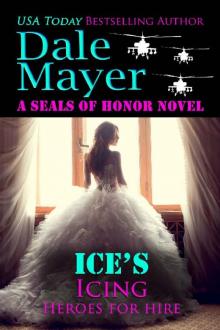 Ice's Icing: A SEALs of Honor World Novel (Heroes for Hire Book 20)
Ice's Icing: A SEALs of Honor World Novel (Heroes for Hire Book 20) Elliot (Hathaway House Book 5)
Elliot (Hathaway House Book 5) Unmasked
Unmasked Zack's Zest: A SEALs of Honor World Novel (Heroes for Hire Book 24)
Zack's Zest: A SEALs of Honor World Novel (Heroes for Hire Book 24) Lucas
Lucas Lennox
Lennox Kerrick
Kerrick Nico (The Mavericks Book 8)
Nico (The Mavericks Book 8) Baylor: SEALs of Honor, Book 26
Baylor: SEALs of Honor, Book 26 SEALs of Honor: Kanen
SEALs of Honor: Kanen Brock
Brock SEALs of Honor: Taylor
SEALs of Honor: Taylor Greyson (The K9 Files)
Greyson (The K9 Files) Jackson
Jackson Corpse in the Carnations
Corpse in the Carnations Lance: A Hathaway House Heartwarming Romance
Lance: A Hathaway House Heartwarming Romance Biker Baby Blues--Morgan Book 4
Biker Baby Blues--Morgan Book 4 Cain's Cross
Cain's Cross Ice Pick in the Ivy (Lovely Lethal Gardens Book 9)
Ice Pick in the Ivy (Lovely Lethal Gardens Book 9) Blaze
Blaze Iain: A Hathaway House Heartwarming Romance
Iain: A Hathaway House Heartwarming Romance Tucker (The K9 Files Book 13)
Tucker (The K9 Files Book 13) Weston
Weston Jax (The Mavericks Book 3)
Jax (The Mavericks Book 3) Simon Says... Jump (Kate Morgan Thrillers Book 2)
Simon Says... Jump (Kate Morgan Thrillers Book 2) Nabbed in the Nasturtiums
Nabbed in the Nasturtiums Kano's Keep
Kano's Keep Jewels in the Juniper (Lovely Lethal Gardens Book 10)
Jewels in the Juniper (Lovely Lethal Gardens Book 10) Ryker (The Mavericks Book 6)
Ryker (The Mavericks Book 6) Miles
Miles Asher (The Mavericks Book 5)
Asher (The Mavericks Book 5) Ice Maiden : A Psychic Visions Novel
Ice Maiden : A Psychic Visions Novel Aaron
Aaron Jaden: A Hathaway House Heartwarming Romance
Jaden: A Hathaway House Heartwarming Romance Deep Beneath: A Psychic Vision Novel
Deep Beneath: A Psychic Vision Novel Parker (The K9 Files Book 6)
Parker (The K9 Files Book 6) Ethan
Ethan Lucas (The K9 Files Book 5)
Lucas (The K9 Files Book 5) Snap, Crackle ...
Snap, Crackle ... Tanner: SEALs of Honor, Book 18
Tanner: SEALs of Honor, Book 18 Shane
Shane SEALs of Honor: Baylor
SEALs of Honor: Baylor Heath
Heath Handcuffs in the Heather
Handcuffs in the Heather Finn (Hathaway House Book 6)
Finn (Hathaway House Book 6) Noah's Nemesis
Noah's Nemesis Elliot
Elliot Jaden
Jaden Kerrick (The Mavericks Book 1)
Kerrick (The Mavericks Book 1) Ryland’s Reach (Bullard's Battle Book 1)
Ryland’s Reach (Bullard's Battle Book 1) Evidence in the Echinacea (Lovely Lethal Gardens Book 5)
Evidence in the Echinacea (Lovely Lethal Gardens Book 5) Rowan (The K9 Files Book 10)
Rowan (The K9 Files Book 10) Gregory
Gregory Reyes’s Raina
Reyes’s Raina The Final Reveal
The Final Reveal Cat's Claus
Cat's Claus Jerricho
Jerricho Vince's Vixen
Vince's Vixen Jax
Jax From the Ashes: A Psychic Visions Novel
From the Ashes: A Psychic Visions Novel Johan's Joy
Johan's Joy Simon Says... Hide (Kate Morgan Thrillers Book 1)
Simon Says... Hide (Kate Morgan Thrillers Book 1) Keane (The Mavericks Book 9)
Keane (The Mavericks Book 9)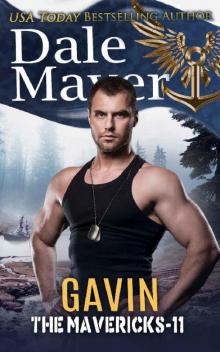 Gavin (The Mavericks Book 11)
Gavin (The Mavericks Book 11) Fallon's Flaw
Fallon's Flaw Johan's Joy: A SEALs of Honor World Novel (Heroes for Hire Book 21)
Johan's Joy: A SEALs of Honor World Novel (Heroes for Hire Book 21) Dezi’s Diamond
Dezi’s Diamond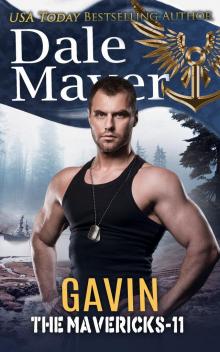 Gavin
Gavin Keith: A Hathaway House Heartwarming Romance
Keith: A Hathaway House Heartwarming Romance Eton's Escape (Bullard's Battle Book 3)
Eton's Escape (Bullard's Battle Book 3) Eton's Escape
Eton's Escape Galen's Gemma
Galen's Gemma Jewels in the Juniper
Jewels in the Juniper SEALs of Honor: Axel
SEALs of Honor: Axel Aaron: A Hathaway House Heartwarming Romance
Aaron: A Hathaway House Heartwarming Romance Gun in the Gardenias (Lovely Lethal Gardens Book 7)
Gun in the Gardenias (Lovely Lethal Gardens Book 7) Diesel (The Mavericks Book 13)
Diesel (The Mavericks Book 13) Kurt (The K9 Files Book 12)
Kurt (The K9 Files Book 12) Miles (The Mavericks Book 7)
Miles (The Mavericks Book 7) Dagger in the Dahlias
Dagger in the Dahlias Geir
Geir Handcuffs in the Heather (Lovely Lethal Gardens Book 8)
Handcuffs in the Heather (Lovely Lethal Gardens Book 8) Keith
Keith Iain
Iain Beau
Beau Biker Blues
Biker Blues From the Ashes
From the Ashes SEALs of Honor: Troy
SEALs of Honor: Troy Ice Maiden
Ice Maiden Lennox (The Mavericks Book 10)
Lennox (The Mavericks Book 10) Dagger in Dahlias
Dagger in Dahlias Arsenic in the Azaleas
Arsenic in the Azaleas Bonaparte's Belle: A SEALs of Honor World Novel (Heroes for Hire Book 24)
Bonaparte's Belle: A SEALs of Honor World Novel (Heroes for Hire Book 24) Simon Says... Ride (Kate Morgan Thrillers Book 3)
Simon Says... Ride (Kate Morgan Thrillers Book 3) SEALs of Honor: Hawk
SEALs of Honor: Hawk Cole
Cole Carter
Carter Beau (The Mavericks Book 4)
Beau (The Mavericks Book 4) Psychic Visions 08-Now You See Her...
Psychic Visions 08-Now You See Her... Broken Protocols 1-3
Broken Protocols 1-3 Nash
Nash Griffin (The Mavericks Book 2)
Griffin (The Mavericks Book 2) Tucker
Tucker![Biker Blues_Morgan [Part 1] Read online](http://i1.bookreadfree.com/i/03/21/biker_blues_morgan_part_1_preview.jpg) Biker Blues_Morgan [Part 1]
Biker Blues_Morgan [Part 1] Stroke of Death
Stroke of Death Logan's Light: A SEALs of Honor World Novel (Heroes for Hire Book 6)
Logan's Light: A SEALs of Honor World Novel (Heroes for Hire Book 6) Biker Blues: Morgan (Biker Blues Book 1)
Biker Blues: Morgan (Biker Blues Book 1) Tuesday's Child (Book 1 of Psychic Visions, a paranormal romantic suspense)
Tuesday's Child (Book 1 of Psychic Visions, a paranormal romantic suspense) Pierce
Pierce SEALs of Honor: Cooper
SEALs of Honor: Cooper Griffin
Griffin SEALs of Honor: Mason's Wish
SEALs of Honor: Mason's Wish SEALs of Honor: Brett
SEALs of Honor: Brett Bones in the Begonias
Bones in the Begonias Darkest Designs
Darkest Designs Levi's Legend: A SEALs of Honor World Novel (Heroes for Hire Book 1)
Levi's Legend: A SEALs of Honor World Novel (Heroes for Hire Book 1) Tanner
Tanner Vampire in Chaos
Vampire in Chaos Itsy-Bitsy Spider
Itsy-Bitsy Spider Gregory: A Hathaway House Heartwarming Romance
Gregory: A Hathaway House Heartwarming Romance North’s Nikki
North’s Nikki Carter (The K9 Files Book 7)
Carter (The K9 Files Book 7) Simon Says... Hide
Simon Says... Hide Family Blood Ties Set - 3 books in 1
Family Blood Ties Set - 3 books in 1 Tyson's Treasure_A SEALs of Honor World Novel
Tyson's Treasure_A SEALs of Honor World Novel SEALs of Honor: Evan
SEALs of Honor: Evan Ryder
Ryder Scales: Of Justice (Broken But ... Mending Book 3)
Scales: Of Justice (Broken But ... Mending Book 3) Hide'n Go Seek (Book 2 of Psychic Visions, a paranormal romance)
Hide'n Go Seek (Book 2 of Psychic Visions, a paranormal romance) Zane
Zane Eyes to the Soul
Eyes to the Soul Genesis
Genesis SEALs of Honor: Shadow
SEALs of Honor: Shadow Jace’s Jewel
Jace’s Jewel Corey
Corey Gem Stone
Gem Stone Evidence in the Echinacea
Evidence in the Echinacea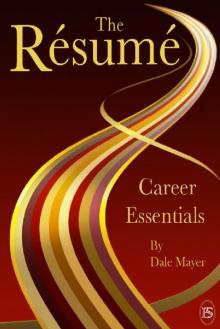 Career Essentials_The Interview
Career Essentials_The Interview Family Blood Ties Set 5 in 1
Family Blood Ties Set 5 in 1 Tyson's Treasure: A SEALs of Honor World Novel (Heroes for Hire Book 10)
Tyson's Treasure: A SEALs of Honor World Novel (Heroes for Hire Book 10) Tuesday's Child BK 1
Tuesday's Child BK 1 Greyson
Greyson Warrick
Warrick Chilled by Death
Chilled by Death Rare Find
Rare Find Michael’s Mercy
Michael’s Mercy Saul’s Sweetheart
Saul’s Sweetheart Into the Abyss: A Psychic Visions Novel (Psychic Visions Series Book 10)
Into the Abyss: A Psychic Visions Novel (Psychic Visions Series Book 10) Vampire in Control
Vampire in Control Knock, knock...
Knock, knock... Touched by Death
Touched by Death Anders’s Angel
Anders’s Angel Harrison's Heart (Heroes for Hire Book 7)
Harrison's Heart (Heroes for Hire Book 7) Shattered: A Psychic Visions Novel
Shattered: A Psychic Visions Novel Flynn's Firecracker: A SEALs of Honor World Novel (Heroes for Hire Book 5)
Flynn's Firecracker: A SEALs of Honor World Novel (Heroes for Hire Book 5) Vampire in Crisis
Vampire in Crisis Vampire in Conflict
Vampire in Conflict Deadly Designs
Deadly Designs SEALs of Honor: Devlin
SEALs of Honor: Devlin Liam’s Lily
Liam’s Lily Erick
Erick Rory’s Rose
Rory’s Rose Dakota’s Delight
Dakota’s Delight Cade
Cade Laszlo
Laszlo Broken Protocols 3.5
Broken Protocols 3.5 Tyson's Treasure
Tyson's Treasure Brandon's Bliss
Brandon's Bliss Rhodes's Reward: A SEALs of Honor World Book (Heroes for Hire 4)
Rhodes's Reward: A SEALs of Honor World Book (Heroes for Hire 4)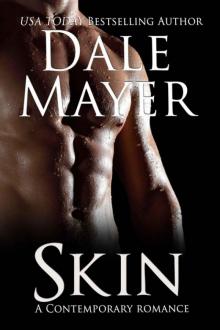 Skin
Skin SEALs of Honor: Dane
SEALs of Honor: Dane SEALs of Honor: Chase
SEALs of Honor: Chase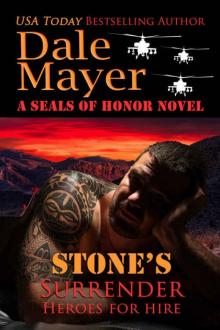 Stone's Surrender: A SEALs of Honor World Novel (Heroes for Hire Book 2)
Stone's Surrender: A SEALs of Honor World Novel (Heroes for Hire Book 2) Biker Blues: Morgan (Biker Blues Book 3)
Biker Blues: Morgan (Biker Blues Book 3) Badger
Badger Celeste
Celeste Scars
Scars